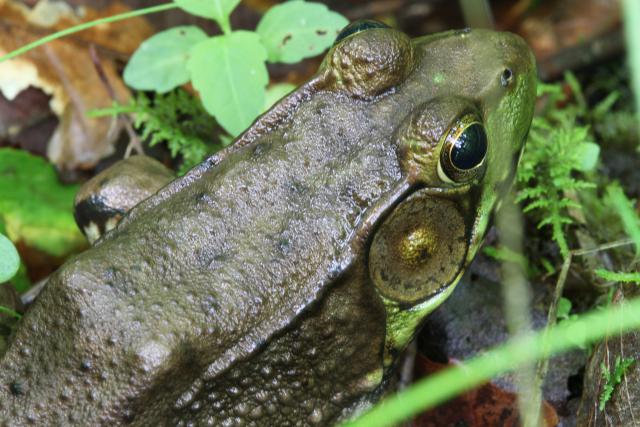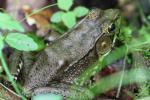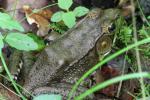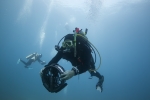Reply to comment
Depth of Field: Frog
ktuli — Wed, 09/29/2010 - 19:23
Alright, I'm sorry about being such a slacker with the posts recently, but between my photography class, and going to a Penguins game, I haven't been home a single evening this week yet.
Anyway, I thought maybe we'd take a look at depth of field. Depth of field in still photography is controlled with the aperture and is defined as the portion of the photo that is acceptable sharpness (not to be confused with focus).
Aperture on your camera is set in f/numbers - a small f/number provides a wide aperture, and a large f/number provides a narrow aperture. I know - it is confusing, but something I've found that makes it easier to understand is to think about it in terms of depth of field. If you select a small f/number, you will get a shallow (small) depth of field. Inversely, if you select a large f/number, you will get a deep (large) depth of field.
But this is much easier to see with examples...
Shallow Depth of Field Technical Data: Canon EOS 7D, Tamron 180mm f/3.5 Di SP LD 1:1 Macro, 1/3 sec at f/3.5. ISO 200. Dolica AX620B100 tripod. No post production. Kanawha State Forest, Charleston, WV.
Notice how the frog is in acceptable sharpness (but technically not tack sharp focus if you look very closely) and the background is pleasantly blurred background as I've mentioned on many other posts.
Deep Depth of Field Technical Data: Canon EOS 7D, Tamron 180mm f/3.5 Di SP LD 1:1 Macro, 8 sec at f/18.2. ISO 200. Dolica AX620B100 tripod. No post production. Kanawha State Forest, Charleston, WV.
Here, you'll notice that almost everything is in acceptable sharpness. You can see the detail in the leaves and plants around the frog. In fact, if you look closely, even the texture of the frog's skin is more detailed. However, the blades of grass in the foreground are starting to become distracting with this depth of field.
There are different reasons and different situations that contribute to why you would want to use either shallow or deep depth of field. Sometimes, you can use a shallow depth of field to eliminate some distracting background elements. Other times, you will want a deep depth of field to keep as much of the photo discernible and acceptably sharp.
I also have another set from this frog illustrating some different depths of field...
I also did a couple photos showing the aperture range of the Tokina 35mm macro lens I recently purchased. And a long while ago I did another similar write-up discussing depth of field, but it didn't have photos to compare and contrast.
Hopefully these multiple sets of photos help to illustrate depth of field so you can try it out with some photos in the future.
Leave a comment and let me know whether this made sense or if I should try again...
- Bill







